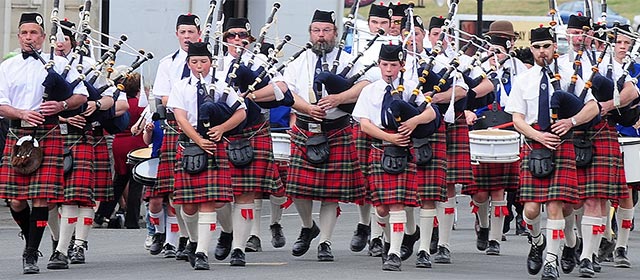Story summary
Early military and brass bands
Military bands arrived in New Zealand with British soldiers in the mid-1840s, and 11 regimental bands were present during the 1860s New Zealand wars. Volunteer forces also set up bands, and these took part in brass-band competitions from 1880. Military bands played brass and other wind instruments, with drums, and were mostly marching bands.
Workplaces, trade unions and temperance societies formed brass bands. Bands played at regattas, sports events, races, picnics, protests and Labour Day parades.
Military bands, 1900 onwards
Military bands played marches, hymns and anthems at ceremonial events, and popular tunes to entertain the troops and public. In the First World War, each New Zealand Expeditionary Force regiment had its own band, and in the Second World War each army brigade formed a band. The Royal New Zealand Air Force band toured New Zealand and played to New Zealand and US troops in the Pacific. After the war some bands continued on a voluntary basis.
In 2014 there were three official military bands – one each for the navy, army and air force.
Brass bands, 1880s onwards
From the 1880s to the 1910s brass bands were the main form of entertainment at outdoor events. Competitions were popular, and townspeople were proud of their local bands. The Salvation Army set up brass bands and encouraged women musicians. From the 1890s many Māori communities had brass bands, which played at events including hui (meetings) and tangi (funerals). In the 1930s the Rātana Church set up seven brass bands.
After the 1920s other forms of music were available, and brass bands became less popular. In the 2000s brass bands still flourished, with national championships held each year.
Pipe bands
Pipe bands play bagpipes and drums. In the late 19th century two military volunteer units had pipe bands. Civilian pipe bands emerged from Caledonian (Scottish cultural) societies, with the first band set up in Invercargill in 1896, and a Dunedin band established two years later. Bands appeared around the country, and competitions were held from 1907. Pipe bands played at Caledonian Society activities, sports events and agricultural shows. Women’s bands were set up from the 1930s, and from the 1950s women played alongside men. Pipe bands continued in the 2000s, with many towns having one or more.





